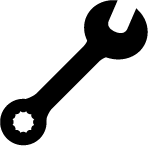Adding An Outdoor Faucet To Your Home's Plumbing
Installing an outdoor faucet can be a great addition to your property because it provides easy access to water for gardening or other outdoor tasks. Homeowners may have questions and concerns about the process of making this upgrade.
What Are The Different Types Of Outdoor Faucets?
Homeowners can choose two primary types of outdoor faucets for their homes. Frost-free faucets are designed to prevent freezing during winter months by keeping water out of the exposed portion of the faucet. They have a longer internal stem that extends inside your home's insulation where it remains warmer. This feature makes frost-free faucets ideal in areas with harsh winters or frequent temperature fluctuations.
Standard hose bibs are more traditional outdoor faucets commonly found in milder climates where freezing is not a significant concern. Though less expensive than frost-free options, they may require additional winterizing measures if temperatures drop below freezing.
What Are The Factors To Consider When Selecting The Location For Your Outdoor Faucet?
Selecting the right location for your outdoor faucet ensures optimal functionality and convenience. Choose a location that allows easy access to areas where you frequently use water. Depending on your goals, this may include areas like gardens or driveways. Effective placement can prevent using long hoses, which could be easily damaged and a safety risk.
Ensure adequate drainage is near your chosen location so water does not pool around the base of your faucet. This problem could lead to potential damage to the foundation. Additionally, consider the proximity to your home's water supply when choosing a location to minimize additional pipe installations.
What Are Some Essential Tips To Ensure A Leak-Free Installation?
Before installing your faucet, a plumber will apply thread-sealing tape around the male threads of the pipe that connects to your faucet. This helps ensure a watertight seal and prevents leaks at the connection point.
A pressure vacuum breaker is a device that prevents backflow from contaminating your home's main water supply. Installing one between your outdoor faucet and hose connection is crucial for safeguarding against potential contamination due to changes in water pressure or plumbing issues.
How Do You Maintain Your Outdoor Faucet To Prevent Damage?
Proper maintenance is essential for your outdoor faucet. Inspect your outdoor faucet regularly for signs of wear or damage, including loose connections, corrosion, or leaks. If you notice something unusual, perform the necessary repairs promptly to prevent further issues.
If you live where freezing temperatures occur during winter, it is essential to winterize your outdoor faucets. Shut off the indoor valve controlling water flow to your outdoor faucet and drain the remaining water from inside by opening the spigot outside until fully empty.
For more information, contact a local plumber.
Share
